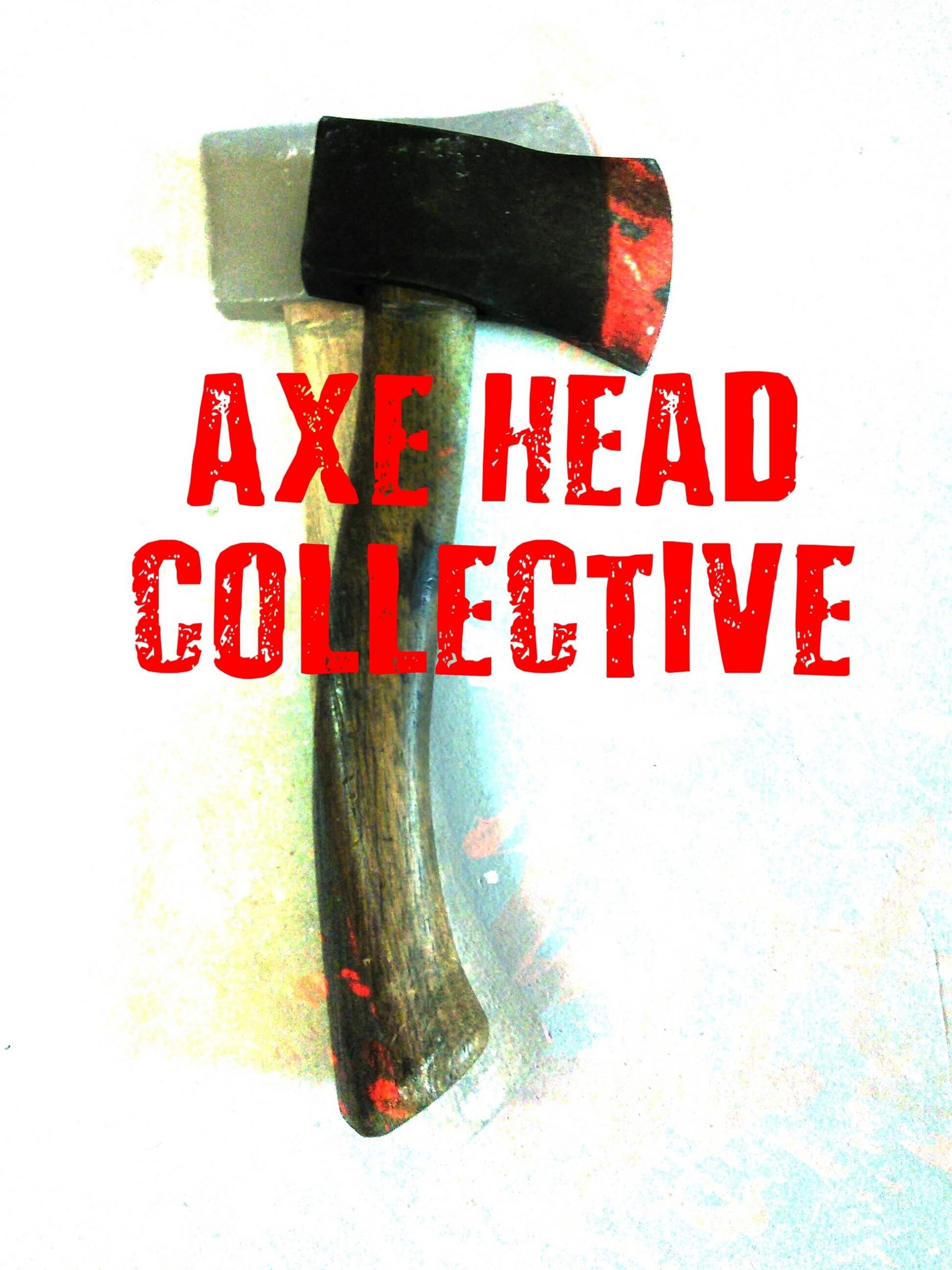GS Artists is pleased to welcome as interns the Axe Head Collective, four postgraduate Swansea College artists.

Photograph by Dylan Fyodor Monk
Axe Head Collective was founded in 2017 by four UWTSD Swansea College of Art Fine Art undergraduates, Alina Skorohoda, Demian Johnston, Jeremy Gluck, and Melissa Rodrigues, who, having become friends and discovered an ease in communication and collaboration, determined to curate a self-directed group show at Volcano Theatre.
Named after a quip from Alina, to considerable aplomb the first Axe Head to Everything show took place in March 2018 at Volcano, featuring nine UWTSD undergrad fine artists. The following November the four curated a show of their work exclusively for Creative Bubble, Studio 95 – Promote Harder. And in March 2019, the second Axe Head to Everything show, subtitled Cut & Run, took place at Volcano.
With work spanning painting, installation, video, sound art, and digital art, the Collective aspires to collaborate with and celebrate Swansea’s thriving art community, curating further shows and soon seeking funding to this end.
Interning at GS Artists is a fantastic step forward for the Collective, and for GS Artists will bring to the table diverse skills including exhibition curation and planning, public relations and social media expertise, energetic engagement with the UWTSD and wider local artist community.
Axe Head Collective looks forward to learning requisite skills and following in the footsteps of UWTSD postgraduates now co-directing the gallery and, of course, benefiting from working closely with Jane Simpson, whose experience and initiative inspires and motivates them to grow under the GS umbrella into a Collective with a future in the local and larger art community.
An Axe Head exhibition at GS Artists is opened October 18th, 2019, running until October 31st.
Axe Head Collective Artist Statements and Instagram
Alina Skorohoda @skorohodalinaart
Alina’s artwork explores the notion of woman’s duty to the world. She responds to the feelings of obligation that haunt women everywhere. Alina uses domestic objects in her work. Through altering these objects, she questions attitudes, fears and unwritten rules which have formed a hostile environment for women and their behaviour within it.
Demian Johnston @demonstuff
Demian’s practice looks to develop internal mindscapes involving multiple symbols and thoughts to bridge the physical process and mental or spiritual state, and individual and collective consciousness. Building on a growing body of work featuring dynamic installations with energy concentrated by their confinement, his work is rarely figurative, encompassing dimensions of unpredictability and naturalness.
Jeremy Gluck @nonceptualism
Working as a fine artist in digital art, film, installation and mixed media, Jeremy Gluck’s uncompromising works confront the viewer, encouraging a physical, sensitive, or conceptual experience of each. Radical artistic engagement is the mission statement.
Rejoicing in subverting the artist’s self-concept and corrupting the canon in ways playful and perverse, undermining previous hierarchies and perceptions of what is ‘art’ and is not, Gluck’s work reflects the powerful dichotomy, which exists between the narcissism of the digital age and the need for a stark, political commentary on the post-millennial landscape.
Through the utilisation of a raw typography and a monochromatic palette, Gluck invites the audience to consume less and engage more, therefore negating the idea of art having a literal presence.
Melissa Rodrigues @missbalencantefineart
Rodrigues’ work uses a variety of materials to explore issues of displacement, belonging, and cultural identity. Addressing issues concerning the movement of people across the world, immigration, sense of belonging, cultural identity and the rhetoric of otherness are the bases from which Rodrigues’ work blossoms. Rodrigues’ work has developed with the notion of cultural identity and aims to explore the influential factors in the construction of a cultural being. Lately Rodrigues’ work has a new element added to it, recognising textile as a piece that plays an important role in collectiveness and collective identity, Rodrigues has been exploring and researching the routes of these pieces of cloth throughout history, their importance in our understanding of self as members of social groups, and the misconceptions about them. For this piece, Rodrigues proposes a destruction of labels, symbols, preconceptions and expectations we place in and on “others”, based in our understanding of “them”, instead seeking similarities.
Axe Head to Everything II: Photography by Mitja Zupanc





